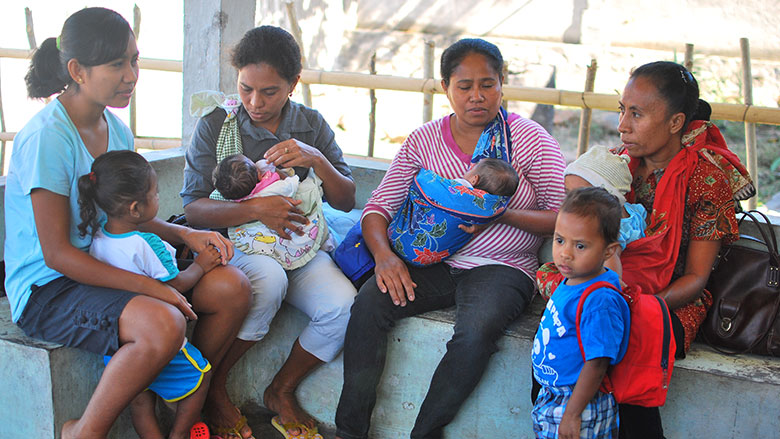Only 53.5% of working-age women in Indonesia are part of the labor force – a rate that is far below the 67.7% average for the East Asia and Pacific region. Why is female labor force participation in Indonesia so low? A recently published analysis by the World Bank indicates that childcare – or the lack thereof – may constrain women in both urban and rural areas from participating in the workforce.
To examine the effect of childcare access on women’s labor market decisions, the analysis compares mothers who live in households with elderly household members to those without elderly relatives at home. The elderly can sometimes provide informal childcare services that alleviate the care burden.
Key findings from the analysis include:
At least for some women, the childcare burden seems to pose constraints.
- Between ages 26 and 28, when fertility peaks, the percentage of urban women who work is higher among those who live with elderly family members, by a margin of 10 to 19 percentage points.
- In rural areas, rural women are more likely to be employed in agriculture and less likely to be in formal employment, a situation that facilitates work with childcare.
- In addition, between 2000 and 2014, the number of families with grandmothers as primary caregivers multiplied almost sevenfold from a nearly negligible 0.8 percent to 5.7 percent. This increase was commensurate with the increase in female labor force participation over this period.
Unmet childcare needs have an economic cost in terms of foregone earnings.
- In urban areas, women living with elderly family members are likely to return to work two years after childbirth; for women without elderly family members, this period is twice as long. Using data from the Labor Force Survey, the analysis estimates the cost of this prolonged absence from the labor market at approximately US$1,300.
- In both urban and rural areas, women may return to different lines of work depending on whether they can count on elderly relatives for childcare. Women without elderly support are more likely to switch to less lucrative occupations. In rural areas, women are likely to move out of manufacturing and into agriculture, while in urban areas, women move out of manufacturing and into sales. These career changes are associated with US$319 and US$255 annually respectively in foregone earnings.
Policy Recommendations
- In Indonesia, 67% of all households with young children do not include an elderly family member, so there is likely a demand for childcare services among women in these households . Developing policies and programs that facilitate access to childcare has the potential to increase women’s labor force participation.
- The economic losses that occur as a result of changing occupations due to unmet childcare needs are not temporary and highlight the need to explore constraints to combining market and household roles in more lucrative professions.
- Future research should explore the causal relationship between childcare constraints and labor market choices, and outline public policy recommendations most appropriate to help fill the childcare needs of working women in Indonesia.
